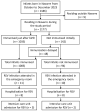Effectiveness of Nirsevimab Immunoprophylaxis Administered at Birth to Prevent Infant Hospitalisation for Respiratory Syncytial Virus Infection: A Population-Based Cohort Study
- PMID: 38675765
- PMCID: PMC11054679
- DOI: 10.3390/vaccines12040383
Effectiveness of Nirsevimab Immunoprophylaxis Administered at Birth to Prevent Infant Hospitalisation for Respiratory Syncytial Virus Infection: A Population-Based Cohort Study
Abstract
Respiratory syncytial virus (RSV) infection is a frequent cause of hospitalisation in the first few months of life; however, this risk rapidly decreases with age. Nirsevimab immunoprophylaxis was approved in the European Union for the prevention of RSV-associated lower respiratory tract disease in infants during their first RSV season. We evaluated the effectiveness of nirsevimab in preventing hospitalisations for confirmed RSV infection and the impact of a strategy of immunisation at birth. A population-based cohort study was performed in Navarre, Spain, where nirsevimab was offered at birth to all children born from October to December 2023. Cox regression was used to estimate the hazard ratio of hospitalisation for PCR-confirmed RSV infection between infants who received and did not receive nirsevimab. Of 1177 infants studied, 1083 (92.0%) received nirsevimab. The risk of hospitalisation for RSV was 8.5% (8/94) among non-immunised infants versus 0.7% (8/1083) in those that were immunised. The estimated effectiveness of nirsevimab was 88.7% (95% confidence interval, 69.6-95.8). Immunisation at birth of infants born between October and December 2023 prevented one hospitalisation for every 15.3 immunised infants. Immunisation of children born from September to January might prevent 77.5% of preventable hospitalisations for RSV in infants born in 2023-2024. These results support the recommendation of nirsevimab immunisation at birth to children born during the RSV epidemic or in the months immediately before to prevent severe RSV infections and alleviate the overload of paediatric hospital resources.
Keywords: hospitalisation; infants; monoclonal antibodies; nirsevimab; respiratory syncytial virus; vaccination effectiveness; vaccination impact.
Conflict of interest statement
The authors declare no conflicts of interest.
Figures




References
-
- Li Y., Wang X., Blau D.M., Caballero M.T., Feikin D.R., Gill C.J., Madhi S.A., Omer S.B., Simões E.A.F., Campbell H., et al. Global, regional, and national disease burden estimates of acute lower respiratory infections due to respiratory syncytial virus in children younger than 5 years in 2019: A systematic analysis. Lancet. 2022;399:2047–2064. doi: 10.1016/S0140-6736(22)00478-0. - DOI - PMC - PubMed
-
- Wildenbeest J.G., Billard M.N., Zuurbier R.P., Korsten K., Langedijk A.C., van de Ven P.M., Snape M.D., Drysdale S.B., Pollard A.J., Robinson H., et al. The burden of respiratory syncytial virus in healthy term-born infants in Europe: A prospective birth cohort study. Lancet Respir. Med. 2023;11:341–353. doi: 10.1016/S2213-2600(22)00414-3. - DOI - PMC - PubMed
-
- Nygaard U., Hartling U.B., Nielsen J., Vestergaard L.S., Dungu K.H.S., Nielsen J.S.A., Sellmer A., Matthesen A.T., Kristensen K., Holm M. Hospital admissions and need for mechanical ventilation in children with respiratory syncytial virus before and during the COVID-19 pandemic: A Danish nationwide cohort study. Lancet Child Adolesc. Health. 2023;7:171–179. doi: 10.1016/S2352-4642(22)00371-6. - DOI - PMC - PubMed
-
- Langley J.M., Bianco V., Domachowske J.B., Madhi S.A., Stoszek S.K., Zaman K., Bueso A., Ceballos A., Cousin L., D’Andrea U., et al. Incidence of respiratory syncytial virus lower respiratory tract infections during the first 2 years of life: A Prospective Study Across Diverse Global Settings. J. Infect. Dis. 2022;226:374–385. doi: 10.1093/infdis/jiac227. - DOI - PMC - PubMed
-
- Grupo de Trabajo Utilización de Nirsevimab Frente a Infección por Virus Respiratorio Sincitial de la Ponencia de Programa y Registro de Vacunaciones . Comisión de Salud Pública del Consejo Interterritorial del Sistema Nacional de Salud. Ministerio de Sanidad; Madrid, Spain: Jul, 2023. [(accessed on 22 February 2024)]. Available online: https://www.sanidad.gob.es/areas/promocionPrevencion/vacunaciones/comoTr....
Grants and funding
LinkOut - more resources
Full Text Sources

